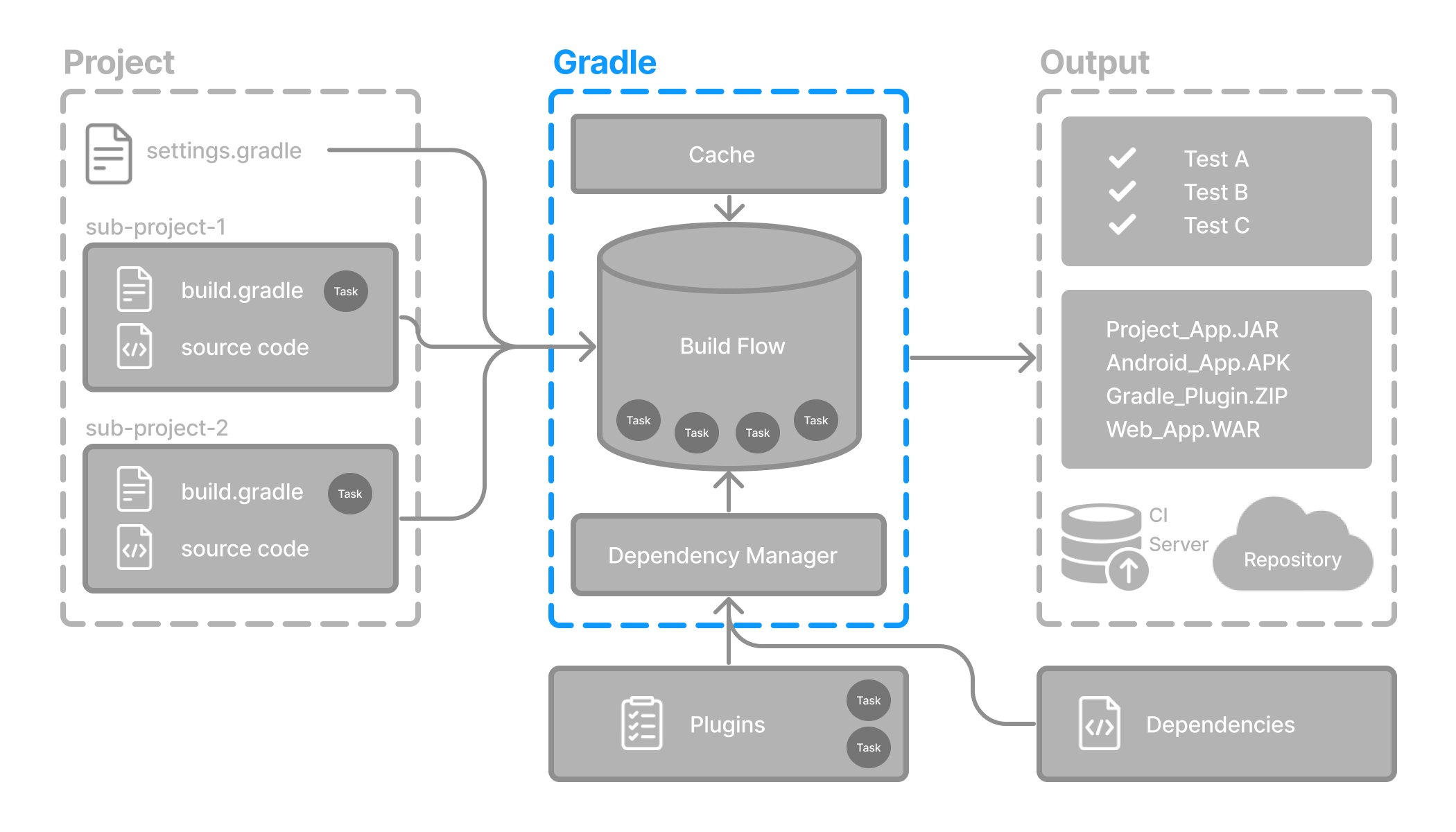The command-line interface is the primary method of interacting with Gradle outside the IDE.

Use of the Gradle Wrapper is highly encouraged.
Substitute ./gradlew (in macOS / Linux) or gradlew.bat (in Windows) for gradle in the following examples.
Executing Gradle on the command line conforms to the following structure:
gradle [taskName...] [--option-name...]
Options are allowed before and after task names.
gradle [--option-name...] [taskName...]
If multiple tasks are specified, you should separate them with a space.
gradle [taskName1 taskName2...] [--option-name...]
Options that accept values can be specified with or without = between the option and argument. The use of = is recommended.
gradle [...] --console=plain
Options that enable behavior have long-form options with inverses specified with --no-. The following are opposites.
gradle [...] --build-cache gradle [...] --no-build-cache
Many long-form options have short-option equivalents. The following are equivalent:
gradle --help gradle -h
Command-line usage
The following sections describe the use of the Gradle command-line interface. Some plugins also add their own command line options.
Executing tasks
To execute a task called taskName on the root project, type:
$ gradle :taskName
This will run the single taskName and all of its dependencies.
Specify options for tasks
To pass an option to a task, prefix the option name with -- after the task name:
$ gradle taskName --exampleOption=exampleValue
Consult the Gradle Command Line Interface reference to learn more.
Next Step: Learn about the Settings file >>